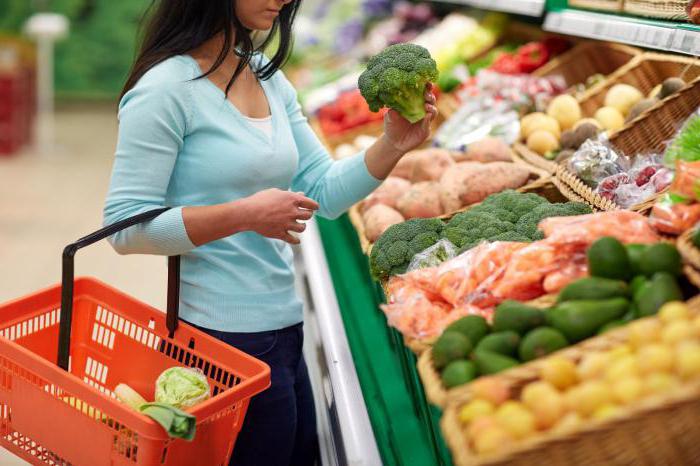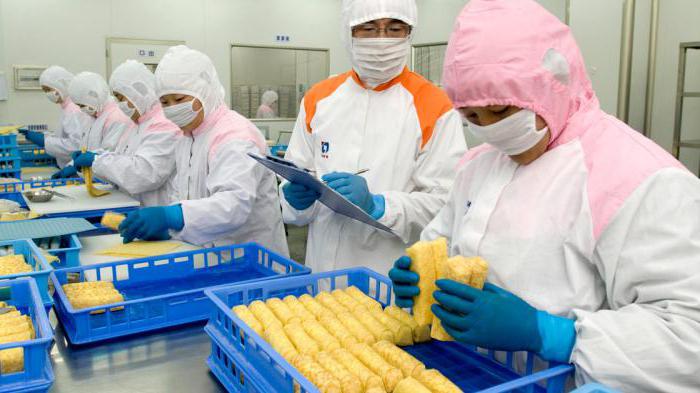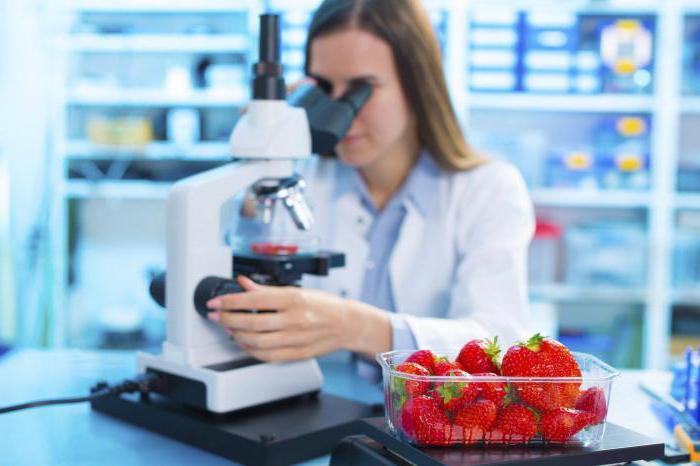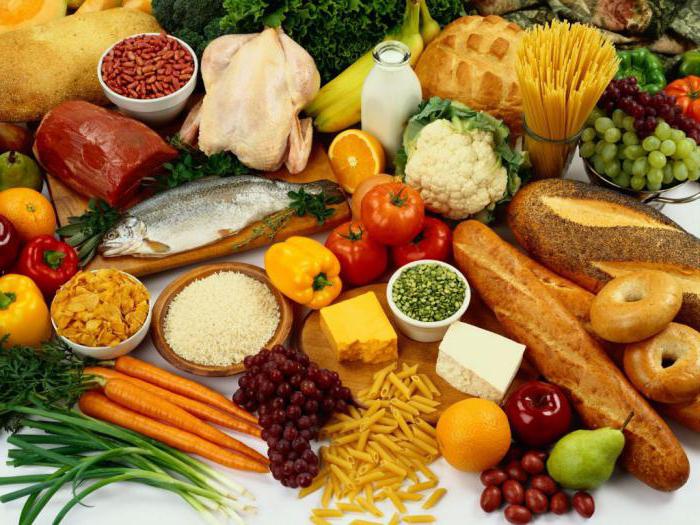More and more of our compatriots want to personally familiarize themselves with the provisions of the federal law on the quality and safety of food products. People are worried about the quality of food products coming to them through points of sale. Food safety is the key to health, so the excitement in this regard is fully justified.

Urgency of the problem
Despite the laws on food safety adopted in our country, in reality often components that contain heavy metals, nitrate compounds, and harmful elements get into food. Many are panicky afraid of the acronym GMOs and purchase only those products on whose packaging there is a direct indication of their absence in the composition. Unfortunately, as numerous examinations show, even such a loud statement by the manufacturer is not always a guarantee of security.
It is very difficult for a person to protect himself and his relatives from the entry of poisonous, dangerous, harmful compounds through food. Currently, the responsibility for identifying such substances lies with specialized laboratories. In accordance with the Federal Law on Food Safety, they are required to certify products. Thorough independent verification is the key to the quality and safety of products on sale.
What is the problem?
As can be seen from the federal law on food safety, first of all, it is supposed to assess the dangers that a person eating them can face, that is, it is the end point of the process that is analyzed. The production of goods is a long chain of sequential actions, each of which is a potential source of danger to the final result. To ensure consumer safety, all steps of the product chain must be carefully monitored. Debugged quality monitoring is ensured by the unification of efforts of all the responsible persons of enterprises participating in the production of products.
General understanding of the term
As can be seen from the legislative act adopted at number 29 "On the quality and safety of food products", the very understanding of safe products implies the absence of an impact on the human body from the side of the result of the production chain. They evaluate whether the use of the product can lead to mutations, cause cancer, poisoning. The laboratories check whether there is any likelihood of any other negative impact on the state of the consumer of the product. In this case, they analyze only the situation when the products are used in moderate, generally accepted volumes.

Dedicated to food safety, Federal Law 29 states that as part of a laboratory audit, it is necessary to monitor compliance with standards, standards generally accepted in the territory of the country, and verify how the content complies with accepted regulations. This is especially true for limiting concentrations or the absence of certain compounds in principle. It is important to examine products for bio-, chemical pollution, poisonous natural substances. In the framework of laboratory research, attention is paid primarily to the discovery of such compounds that are characteristic of a particular product under study due to its nature.
Reciprocal relationship
Currently, hygienic food safety is a rather voluminous, multi-layered concept, concept that is closely related to the generally accepted postulates of hygiene as a science. Two main parameters have been scientifically developed, on the basis of which product safety is evaluated.It:
- sandal quality;
- epidemic safety.
And if more?
The first hygienic requirement for food safety compels us to check for the presence of denaturation (chemical, microbial), toxic, chemical components from the category of inorganics, organics. In addition, in laboratories, products are examined for radionuclides. In doing so, take into account generally accepted standards regarding the norms permitted within the state.
The second parameter assumes the absence of contamination or the presence of such within a reasonable level declared by federal regulations. Speaking about the quality and safety of food products, it is necessary to check the presence of microscopic life forms from the category of pathogenic and conditionally such. In the laboratory, products are examined for the presence of helminths, parasite larvae, toxins, fungi, and bacteria.
Chemical safety
The modern idea of the quality and safety of food products implies that the product parameters comply with the established federal standards, which have upper concentration limits for various compounds. The laws limit how many residues of various compounds can be observed in the assortment presented in stores. Special attention should be paid to pesticides, additives used for complementary foods in agriculture, as well as drugs used in veterinary medicine. When processing raw materials for the manufacture of the product, auxiliary components are used, the remains of which can also be found in the finished product. Assessment of concentration is carried out in the laboratory using high-precision equipment.

Currently, the law on the quality and safety of food products obliges to control used by humans, including taking into account the specifics of technology, chemical, biological compounds. It is necessary to check the presence of traces of substances used to ensure the safety of the product, its transportation. In this case, only those components are examined that can be dangerous to humans if the permissible level is exceeded.
Norms and Parameters
The law on the quality and safety of food products establishes the highest permissible concentrations of hazardous components in relation to different categories of food. There are four types of characteristics:
- sanitary, indicative;
- potentially dangerous;
- pathogenic;
- reflecting microbiological parameters of product durability.
What should you strive for?
The main task of a modern food producer is to produce such goods that will be a source of health and a pleasant experience for the consumer. For this, it is necessary to remember not only about quality, but also about food safety. Only a company that truly cares about customers can count on financial success. To do this, you need to use natural, useful elements in the manufacture of goods.
Using a high-quality source product, natural elements, reliable recipes and the most modern technologies allows you to create high-quality nutrition for the general public. Food safety is largely determined by the debugged quality control of all stages of the production chain. In order to achieve the best results, responsible employees with a high level of qualification should be involved in the work. By setting up the production process in this way, you don’t have to worry about future success.

Reliability and reputation
Food safety is a guarantee of the absence of harm to the health of a particular person through a specific position provided for food, if the consumer uses it in accordance with the intended purpose of the manufacturer. Both the level of absence of danger and the quality indicators of nutrition are the key to well-being at the national, federal level.The well-being of the citizens of a power largely depends on the quality of what people eat.
Currently, consumers are well aware of what could potentially be dangerous. Many are accustomed to first carefully study the packaging, only then make a decision in favor of the acquisition of the final product. A huge number of competing positions are presented in stores, and a single person has the opportunity to assess the safety of food products that interest him, in comparison with others from a similar group, and, based on such an analysis, decide what is worth taking. People acquire quality products that will not be a source of danger to their health. Manufacturers interested in the success of their enterprise should keep this in mind.
Organics and Health
Recently, more and more public attention has been attracted to organic agricultural activities, the products of which fully satisfy the requirements of Federal Law 29 on the quality of food safety. The term is understood to mean such a production management system in which the manufacturer avoids the use of synthetic components for fertilizers. We have to abandon GMOs and minimize the negative burden of production on the environment, including air, soil, water bodies. Products produced in this way positively affect not only humans, but also vegetation and fauna, ensuring the correct interaction between them.
Agriculture, which has embarked on a developmental path completely free of foreign inclusions, cannot be called organic, since such conduct of business will soon lead to the depletion of natural resources. This is most affected by soils, where the natural reserves of useful compounds are coming to an end.

Optimal way
The most promising, efficient, and future-oriented farms are those farms where foreign additives are not used, but the work process is organized with the goal of benefiting the environment. Often, such enterprises do not have a specialized certificate of affiliation with organic companies, although in fact they are.
A consumer who is interested in obtaining a quality product, in turn, checks for the appropriate labeling on the specific product that he wants to purchase. In many ways, the certification system allows you to be sure of the quality of the goods. To obtain the right to use the brand, an enterprise must successfully pass specialized tests. These signs are provided by members of the organic sector and third-party firms working in the field of certification.
It is important
Speaking about organic agriculture, you need to understand: the term is quite broad. It includes fish farming, forest cultivation and processing of products obtained from such enterprises. The positions produced by the organic agricultural company represent the area of interest of the respective business associations.
food security
This term is used to denote a situation when a person has financial, economic, physical, social opportunities for acquiring nutritious products that do not pose a danger to his health. Nutrition must be consistent with dietary guidelines and consumption guidelines. The purpose of nutrition is to lead an active life and ensure the health of the population. It was this definition of food security that was formulated back in 1996, during the international summit on food.
Food Security is a structure with an abundance of levels. It involves an analysis of the availability of the range, availability, stability, consumption.
What is this about?
Under the presence of accepted to understand the presence of imported from other areas, powers, as well as produced in a particular area of products in quantities sufficient for the population. In this case, only products of a decent quality level are taken into account.

By accessibility is understood the ability of a person to have at his disposal resources related to products. We consider products that are inherent in nutritional qualities. Access to resources, otherwise referred to as authority, presupposes the existence of a legislative framework, state policy, features of the social structure and economic situation. It is assumed that the individual can implement activities related to the listed range of areas over goods. This includes the availability of a common resource base.
Stability and consumption
The first assumes that all people have access to food - individually for each individual, for families as social cells. A person should not face the risk of losing the availability of a product provoked by unforeseen circumstances (climate, season, crisis). Food stability is an aspect that reflects both the availability of products and the fact of their availability.
When analyzing consumption, they consider diet, water availability, compliance with sanitary conditions, and ensuring health protection at the federal level. If in total all factors correspond to human needs, the situation can be assessed as food well-being. In fact, food safety is largely related to non-food aspects.
Organize wisely
Since buyers require confidence that the choice in favor of a particular product will be a decision made regarding a safe product, the formation of a certified unified management system dealing with food safety comes first. Shops selling products force the manufacturer to look for ways to demonstrate the safety of manufactured goods. Specialized companies offering certification services allow manufacturers to use generally accepted symbols to indicate that the products are safe. Experts in the laboratory evaluate products at different stages of the production chain, including packaging, its quality and compliance with modern requirements. The presence of certificates confirming the quality of the goods is the key to the success of the enterprise in the modern market, whose characteristic feature is fierce competition.
In relation to food products, the most basic standard is ISO 22000. It was the first internationally. Currently, such a standard is indispensable for the formation of a management system responsible for the safety of a manufactured product. As part of a study of the enterprise, experts who produce certification in accordance with ISO requirements evaluate GMP and critical points, possible risks. ISO 22000 is an internationally accepted standard forcing the analysis of the stages of the production chain up to the consumption of a product. Nothing will be left overs.

Alternative
Another certificate, the receipt of which allows the company to effectively prove to consumers that its products are safe, is FSSC 22000. It simultaneously combines the requirements of ISO 22000 and 22002-1. This standardization system has been successfully tested with the participation of the Global State Property Fund Initiative.
In addition, some companies issue SQF certification, which reflects the safety of manufactured products and the debugged quality control at all stages of production. Such a certificate was created with the expectation of the food industry. Currently, it is used at different stages of the food chain.